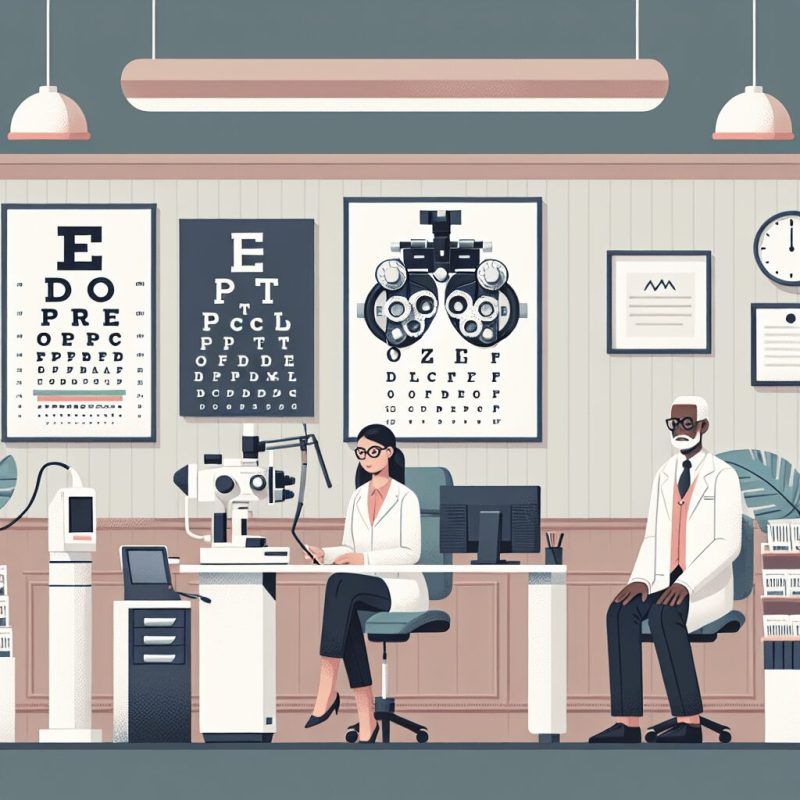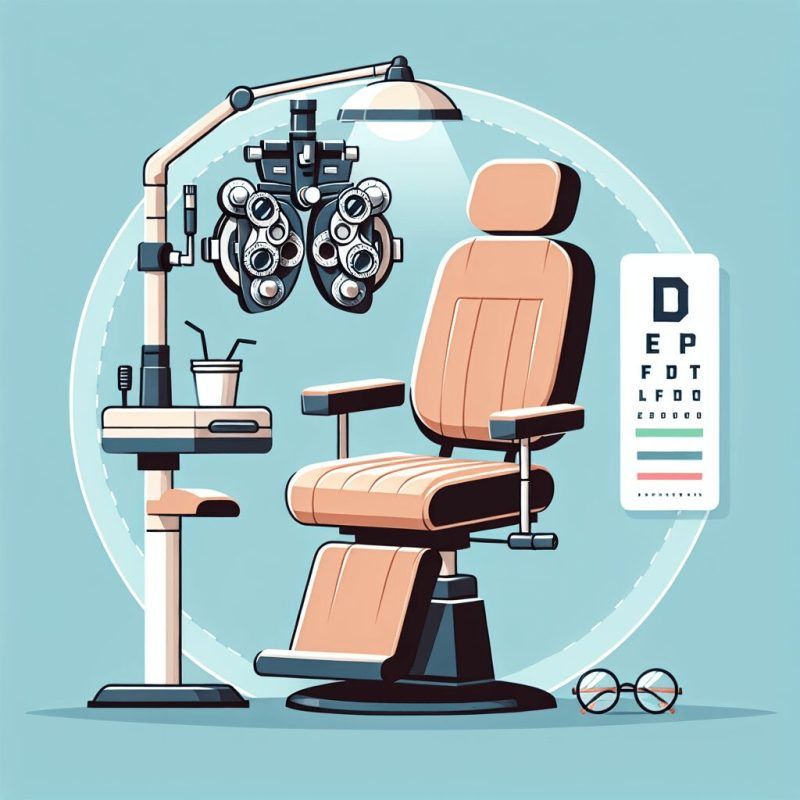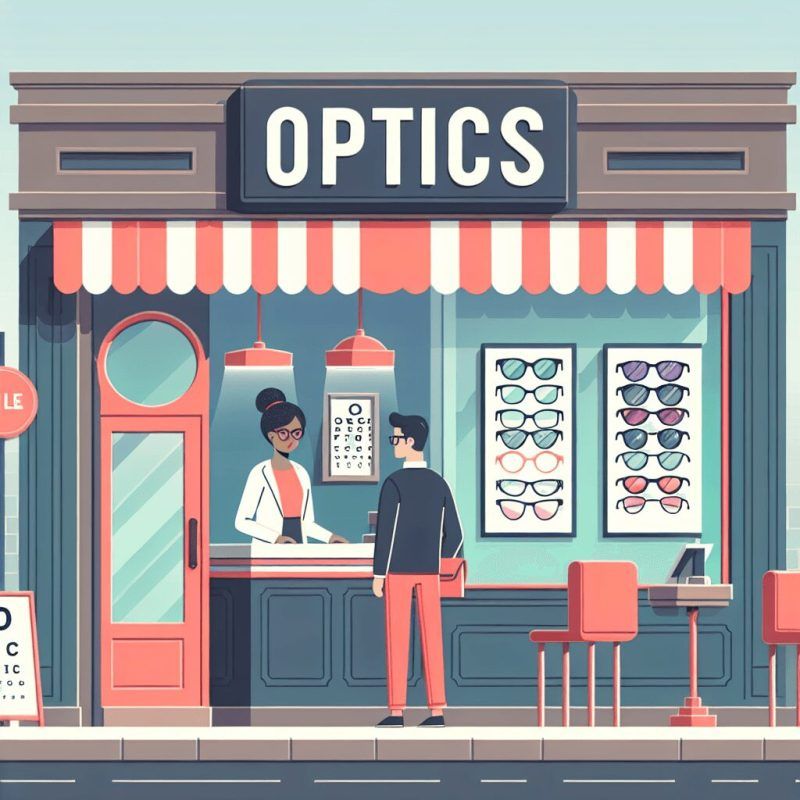Doctor's Corner
Headache Relief for Eyes’ Pressure
Do you ever feel pressure behind your eyes a lot? It could be from different things like migraines, sinus infections, or optic neuritis. Knowing why this happens is important to get the right treatment and feel better. We will talk about why this pressure happens, signs to watch for, and how to treat it.
Let’s learn more about why our eyes feel pressured and how to relieve it.
Understanding Eyes Pressure and Headache
Causes of Eye Pain and Headaches
Eye pain and headaches can come from different causes. Some common reasons include sinusitis, tension headaches, and migraine headaches.
Symptoms to watch out for include red, teary eyes, drooping eyelids, and neck pain for tension headaches. For sinus infections, you might also have a stuffy or runny nose, cough, and feel tired. Optic neuritis, which is an inflamed optic nerve, can cause vision changes, eye pain, and color blindness.
Treatment options include pain relievers like aspirin, antibiotics for sinus infections, and steroid medications for optic neuritis.
Seeing an eye doctor is important for diagnosing and treating conditions like Graves’ disease or dental problems triggering eye pain. Using decongestants, managing stress, and treating underlying medical issues can also help ease discomfort.
Common Causes of Eye Pressure and Headache
Pressure behind the eyes and headaches can be caused by various factors, including sinusitis, tension headaches, and migraines.
Sinus infections can lead to feelings of pressure in the upper part of the face, including behind the eyes. Symptoms may include a stuffy or runny nose, cough, and fever.
Tension headaches, affecting approximately 80% of individuals, can cause a sense of pressure behind the eyes. Additionally, symptoms like sore neck and shoulder muscles and red, teary eyes may be present.
Migraines, a severe form of headache, can also result in pressure behind the eyes. Symptoms may include throbbing pain, sensitivity to light, and aura states like zig-zag patterns.
Other conditions such as Graves’ disease, optic neuritis, toothaches, and face injuries can also lead to pressure behind the eyes, requiring prompt medical attention.
Symptoms like dry eyes, vision loss , or double vision may indicate more serious underlying conditions, emphasizing the importance of seeking professional help, particularly from an eye doctor, for accurate diagnosis and suitable treatment.
Differences Between Eye Discomfort and Orbital Pain
Eye discomfort is usually felt on the surface of the eyeball, resulting in dry eyes or scratchiness. Orbital pain, on the other hand, is typically experienced behind the eyes or within the eye socket.
You can distinguish between the two types of pain based on their characteristics. Eye discomfort is often described as stabbing or searing, whereas orbital pain is commonly associated with deep pressure.
Symptoms like vision changes, eye bulging, or double vision are more likely to be linked to conditions such as Graves’ disease or optic neuritis, which cause orbital pain.
Pain behind the eyes can also be caused by dental problems, sinus infections, or head injuries.
Treatment options for these conditions may involve medications like aspirin for headaches or antibiotics for sinus infections. Treatment might also include addressing the underlying causes by visiting an eye doctor for a comprehensive eye exam and receiving appropriate medical care.
Symptoms to Look Out For
Common symptoms of eye strain and headaches include:
-
Pain on the surface of the eyes
-
Pressure behind the eyes
-
Chronic discomfort or dryness
-
Trouble seeing in low-light conditions
Symptoms of tension and migraine headaches to watch out for:
-
Feeling of pressure behind the eyes
-
Red, teary eyes
-
Drooping eyelid
-
Neck and shoulder muscle pain
-
Sweating or redness of the face
-
Soreness in the head (aching, tight, or intense)
Differentiating between eye discomfort and orbital pain:
-
Ocular pain is on the surface of the eye
-
Orbital pain is behind the eyes or throbbing, often with a feeling of tiredness
Important signs to note for vision changes:
-
Loss of vision
-
Color blindness
-
Blurry sight
These signs can help distinguish between eye discomfort and orbital pain.
Signs of Eye Strain and Headaches
Common signs of eye strain and headaches include pressure behind the eyes, throbbing pain, and vision changes.
Tension and migraine headaches can often cause a feeling of pressure behind the eyes.
Symptoms to watch out for related to eye pressure and headaches include red, teary eyes, drooping eyelids, neck and shoulder muscle pain, and swelling on one side of the face.
Other symptoms may include sensitivity to light, ulcers on the eye, eye-bulging from the socket, and loss of vision.
Dental issues, sinus infections, optic neuritis, toothaches, and injuries to the face can also lead to a sensation of pressure or pain behind and around the eyes.
It may be necessary to seek medical treatment, such as antibiotics or steroid therapy, to address the underlying causes of eye discomfort and headaches.
Consult with an eye doctor for a comprehensive eye exam to determine the exact cause and appropriate treatment for symptoms related to eye pressure and headaches.
Indications of Tension and Migraine Headaches
Common signs of tension headaches and migraine headaches include:
-
Pressure behind the eyes
-
Headache pain
-
Nausea
-
Vomiting
-
Sensitivity to light
-
Sensitivity to sound
-
Pulsing head pain
To identify these headaches, watch for:
-
Throbbing head pain
-
Muscle soreness in the head, neck, and shoulders
-
Red, teary eyes
-
Swelling on one side of the face
-
Drooping eyelid
-
Intense head pain
To tell them apart:
-
Tension headaches feel like tightening and pressing
-
Migraine headaches feel pulsing
-
Consider the duration and frequency of headaches
-
Note any visual symptoms like zigzag or colorful lines with migraines.
Possible Factors Contributing to Eye Pressure and Headache
Common physical factors that contribute to eye pressure and headaches include sinus infections, tooth problems, and eye-related issues like optic neuritis.
Sinus infections can lead to pressure behind the eyes due to swelling in the sinuses around the eyes. Tooth problems can cause pain and pressure to spread to nearby areas of the face.
Optic neuritis involves inflammation of the optic nerve connecting the eyes to the brain. It can result in symptoms like pain and temporary vision loss, leading to increased pressure and headaches.
These health conditions can affect eye pressure and lead to headaches, requiring evaluation and treatment by an eye doctor or healthcare professional.
Injury, Sinus Infection, and Tooth Problems
Head injuries in car accidents, bacterial or viral sinus infections, and dental issues causing toothaches are common causes of injury, sinus infections, and tooth problems.
Symptoms to watch out for include pain behind the eyes, throbbing sensations, sinus cavity swelling, facial pain, mucus drainage, fever, headaches, tooth pain, and eye pressure.
Effective management involves using over-the-counter anti-inflammatory drugs, antibiotics, steroid nasal sprays, antihistamines, and pain relievers like acetaminophen.
Seeking medical treatment from an eye doctor or dentist for a proper diagnosis and care is crucial.
Addressing underlying conditions such as optic neuritis, Graves’ disease, migraines, and tension headaches can help alleviate symptoms by targeting the root cause.
Optic Neuritis and Other Eye-related Issues
Eye pressure and headaches can be caused by various conditions related to optic neuritis and other eye-related issues.
Common culprits include:
-
Migraines
-
Tension headaches
-
Sinus infections
-
Graves’ disease
-
Toothaches
Symptoms to watch out for include throbbing pain, red or teary eyes, drooping eyelids, and neck and shoulder muscle discomfort.
Effective treatment options include:
-
Over-the-counter pain relievers like aspirin and acetaminophen
-
Antibiotics for sinus infections
-
Medications for Graves’ disease
For home remedies, cold compresses, elevation of the head while sleeping, and relaxation techniques can help relieve eye pressure.
Seeking medical attention from an eye doctor for a proper diagnosis and treatment plan is important for managing optic nerve inflammation, vision changes, and other eye discomfort associated with these conditions.
Solutions for Eye Pressure Relief and Headache Management
Here are some easy ways to help with eye pressure and headaches:
-
Use over-the-counter pain relievers like aspirin, acetaminophen, or ibuprofen.
-
Place a cold compress over the eyes for relief.
Remember to consult an eye doctor if symptoms are severe or persistent. Seek medical help if experiencing vision changes, severe pain, or worsening symptoms despite home remedies. Eye doctors can find the cause of eye discomfort, such as dry eyes or migraines, and suggest treatments. Regular eye exams are important for monitoring eye health and addressing any concerns.
Effective Home Remedies to Alleviate Eye Pressure and Headaches
Home remedies to alleviate eye pressure and headaches:
-
Use over-the-counter anti-inflammatory medications and pain relievers for mild discomfort.
-
Apply cold compresses over the eyes.
-
Practice relaxation techniques to help ease the pressure.
-
For severe pressure or accompanying symptoms, seek medical attention for proper diagnosis and treatment.
-
Conditions like optic neuritis, Graves’ disease, migraines, tension headaches, sinus infections, toothaches, and facial injuries can cause symptoms like throbbing pain, vision changes, and pressure in the eyes.
-
Medical treatments may include antibiotics for sinus infections, medication for Graves’ disease, or steroids for optic neuritis.
-
Dental issues, autoimmune diseases, and sinuses or optic nerve inflammation can also contribute to eye discomfort. Promptly consulting an eye doctor is recommended.
Consulting an Eye Doctor for Professional Help
Common signs and symptoms that you may need to see an eye doctor for eye pressure and headache problems include:
-
Throbbing head pain
-
Nausea
-
Light sensitivity
-
Seeing unusual lights or hearing strange sounds before a headache starts
These symptoms are often linked to migraines, tension headaches, sinus infections, or dental problems.
Specific eye issues or underlying causes that could lead to persistent eye pressure and headaches are:
-
Optic neuritis (inflammation of the optic nerve causing pain, vision loss, and abnormal pupil reactions)
-
Graves’ disease (an autoimmune disorder affecting the thyroid and causing eye bulging and irritation)
An eye doctor can help by doing a thorough eye exam to pinpoint the reasons behind the symptoms. Treatments like over-the-counter painkillers, prescribed antibiotics for sinus infections, or antihistamines can effectively manage and relieve eye pressure and headaches.
It’s important to seek medical help promptly to address any vision changes and ensure proper care for various eye conditions, from migraines to toothaches, to maintain good eye health.
FAQ
What are some common causes of eye pressure headaches?
Some common causes of eye pressure headaches include eye strain from staring at screens for prolonged periods, sinus congestion, or excessive pressure in the eye from conditions like glaucoma.
How can I relieve eye pressure headaches at home?
To relieve eye pressure headaches at home, you can try using a warm compress on your eyes, practicing relaxation techniques like deep breathing or yoga, and taking breaks from screens and bright lights.
When should I seek medical attention for eye pressure headaches?
Seek medical attention for eye pressure headaches if they are frequent, severe, accompanied by vision changes, or are not relieved by over-the-counter pain medication. Consult a healthcare provider if you experience sudden or severe headaches, especially if you have a history of eye problems.
Are there any specific exercises or stretches that can help reduce eye pressure headaches?
Some exercises and stretches that may help reduce eye pressure headaches include gentle neck stretches, eye and head rotation exercises, and focused breathing techniques.
What are some lifestyle changes that can help prevent eye pressure headaches?
Some lifestyle changes that can help prevent eye pressure headaches include:
-
Taking breaks from screen time
-
Practicing good posture
-
Managing stress through relaxation techniques
-
Getting regular exercise to improve circulation in the eyes
-
Eating a healthy diet rich in antioxidants like fruits and vegetables.
If eye pressure is causing you headaches, it’s time to find relief. Visit Superior Eye Care in The Woodlands or Quality Eye Care in Willowbrook, Texas, for a comprehensive eye examination. Our experts will provide tailored solutions to reduce eye strain and alleviate associated headaches.
The post Headache Relief for Eyes’ Pressure first appeared on Optometrist in Woodlands & Willowbrook TX.
Doctor's Corner





